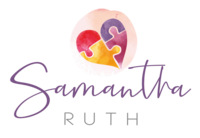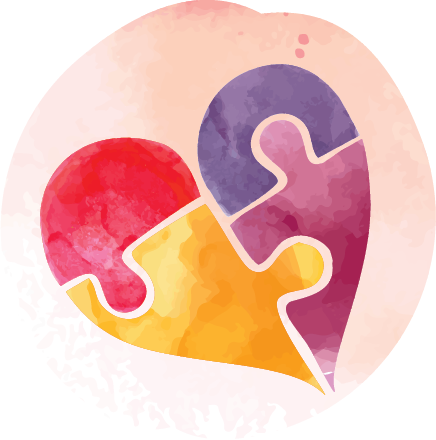Press











ABOUT Sam
SERVICES
Team Ruthless
EVENTS
GRIEFHAB™
PODCAST
RETREATS
shop
HEALING TOGETHER THROUGH THE HOLIDAYS - MAIN EVENT
HEALING TOGETHER - FOR A CAUSE: VIRTUALLY
HEALING TOGETHER - FOR A CAUSE: PILATES IN THE PARK - MICHIGAN
HEALING TOGETHER - FOR A CAUSE: VISIBLE - COLORADO
September 6-7
Jimtember Virtual Jubilee
blog
December 2nd - 8th / Metro Detroit AND VIRTUALLY
August 27th & 28th
August 30-31st
rUTHLESS IN THE ROCKIES
TEAM RUTHLESS
THE CONFIDENCE CONFERENCE
mOBILE rECOVERY dAY
Next event: September 10-23rd, Colorado
October 5-6th -
Virtual Event
September 30th, Castle Rock, Colorado
7 Groups Every week Plus Every Holiday
HEALING TOGETHER - FOR A CAUSE: Ride & ROAR - DALLAS
October 11 -12th
Stay Tuned!
FACES OF GRIEF
JOIN US
Uncovering the True Nature of Human Trafficking in the US and Beyond
January 11, 2024
Today is National Human Trafficking Awareness Day. How much do you really understand about this worldwide issue? Let’s talk about it.
Human trafficking isn’t a simple issue. The portrayals of trafficking shown in movies and on TV usually aren’t realistic or accurate. So what does human trafficking actually look like? And what can we do to change the conversation?
What Does Human Trafficking Look Like in the US?
There are two primary forms of trafficking recognized on a federal level by the United States: sex trafficking and forced labor. When we hear about trafficking, people are almost always talking about a sensationalized version of sex trafficking. But experts say that trafficking for the purpose of labor exploitation is actually more common worldwide.
More importantly, we need to understand the ways that human trafficking occurs. For decades we heard about strange men in white vans offering children candy or showing off a cute puppy. And today, the internet has exploded with terrifying rumors about zip ties and stalkers in your local Target. But those rumors are generally unsubstantiated, and actual trafficking looks much different.
In reality, most traffickers have close personal ties to their victims. Polaris, one of the leading anti trafficking organizations in North America, says that in 2021, 43% of trafficking victims were exploited by their employers. 26% were exploited by a member of their own family, and 22% were trafficked by an intimate partner. Together, that adds up to 91% of trafficking victims in North America. According to Polaris, only 1% of victims are trafficked by someone with whom they had no prior relationship. As for the means of trafficking, abduction only makes up 6% of all trafficking cases in North America.
Why Does It Matter?
But why is it so important to understand what human trafficking actually looks like in the US? Why do we need to push back against these false, sensational narratives?
Actual traffickers benefit from the constant circulation of inaccurate information. They want you to think of traffickers as these kidnapping boogeymen because that means you aren’t looking at them. Real life human traffickers hide behind the scary stories of the latest ‘new trafficking tactic,’ hoping you won’t notice they’re a part of your community.
The greatest thing that we can all do to help end human trafficking in the US and around the world is to get educated. Read statistics and facts about trafficking from reliable organizations. Take the Polaris Project’s ‘Human Trafficking 101’ training online to become better informed on how to spot and stop trafficking. And once you’re informed, share your knowledge with others in your community!
Words from a Survivor of Human Trafficking
One of the amazing speakers at Healing Together Through the Holidays was Amanda Blackwood, a survivor of human trafficking. She has made it her life’s mission to educate the public on the realities of human trafficking.
“People have these automatic assumptions about certain things in life like human trafficking,” she shared in her talk. Sometimes people assume that she must have been a child when she was trafficked; in reality, she experienced trafficking 3 separate times, at the ages of 18, 19, and 31.
Amanda says that trafficking often looks like abuse. “[It] follows along the same lines as domestic violence,” she shares. “I desperately needed someone to love me, and I didn’t yet know how to love myself. So I didn’t know what healthy love was. I kept reaching out for whatever I could get, including right straight through several red flags.”
She didn’t just experience a trauma when she was trafficked. Amanda also experienced the loss of a loved one. “When I left [the situation], I had nearly taken my own life… And when I left, I was still grieving.” It may be different from a partner’s passing, but that doesn’t make Amanda’s grief any less real. She wants people to understand that in a lot of ways, healing from the experience of human trafficking is very similar to grieving the loss of a significant person in your life, and sometimes the two even overlap.
So when you think of trafficking, don’t just think about kids being snatched off the street. Remember that human trafficking is a complex experience happening to people of all ages, genders, and races. And each and every survivor deserves the chance to heal and thrive.
If you missed Healing Together Through the Holidays or Amanda’s talk, don’t worry! You can still register for the event (yes, even after it’s ended) and get access to the ENTIRE library of resources, including each day’s talks, pre event bonuses, and more. You can register for FREE here.
Stay Informed on EVERY Important Awareness Day!
Want to stay informed on all of the important awareness days throughout the year? That’s exactly why I created the 13 Month Griefhab 2024 Awareness Calendar. It’s a calendar specifically designed to showcase EVERY important awareness day, week, and month. The calendar features inspiring quotes, and each month’s artwork was designed by a child impacted by grief. You can get your copy of the Griefhab Awareness Calendar here!
(Interested in a bulk order for your entire team/organization? Contact sam@samantharuth.com for special bulk pricing)
And remember, you can reach out anytime: sam@samantharuth.com
Leave a Reply Cancel reply
120 E. Front St. Loft 2 Traverse City MI 49684 &
77 Monroe Center St Ste 600 Grand Rapids MI 49503
phone : +1 (231)707-0707


Donate TO GRIEFHAB™
Donate today to help make our events and services free for everyone.
You can also donate directly to support a specific client in need.
four
three
info & Investment
two
THE FOUNDER
one
fIVE
GRAB A COPY OF MY
BOOKS & MERCHANDISE
four
three
info & Investment
two
THE FOUNDER
one


fIVE
GRAB A COPY OF MY
BOOKS & MERCHANDISE










HEALING TOGETHER EVENT
EVENTS
four
three
info & Investment
two
THE FOUNDER
one
fIVE
GRAB A COPY OF MY
BOOKS & MERCHANDISE
four
three
info & Investment
two
THE FOUNDER
one





fIVE
GRAB A COPY OF MY
BOOKS & MERCHANDISE










FACEBOOK FAMILY
GRIEFHAB™ SERVICES
FACES OF GRIEF
Our Press Features
THE BE RUTHLESS SHOW
two
three
Recent Articles
one





Coming in September! Stay Tuned.
December 2nd -8th / Metro Detroit AND VIRTUALLY
August 25th
August 30-31st
October 11 -12th
Stay Tuned!










four
three
info & Investment
two
THE FOUNDER
one





fIVE
GRAB A COPY OF MY
BOOKS & MERCHANDISE
four
three
info & Investment
two
THE FOUNDER
one





fIVE
GRAB A COPY OF MY
BOOKS & MERCHANDISE









